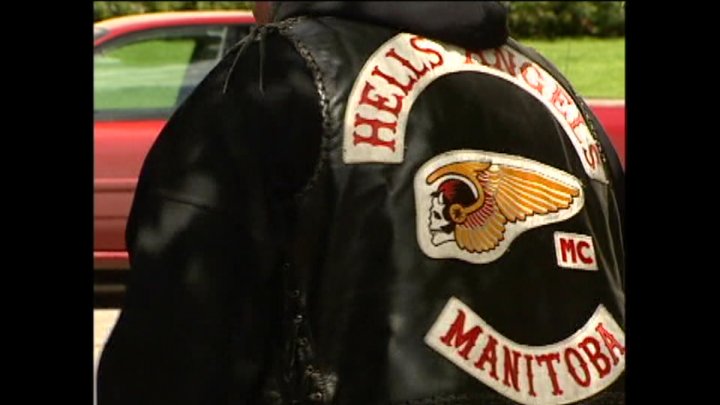Hells Angels: Organization, Activities, And Influence

Table of Contents
The Hierarchical Structure of the Hells Angels
The Hells Angels' organizational structure is a key element in understanding their power and longevity. It's a hierarchical system designed for both internal control and the execution of criminal activities.
Chapters and Mother Chapters
The club operates on a decentralized model, with individual chapters holding significant autonomy. However, this autonomy is balanced by a clear hierarchy. "Mother chapters," typically the oldest and most established, often exert considerable influence over newer chapters.
- Geographical Distribution of Chapters: Hells Angels chapters are spread across numerous countries, creating a vast network for criminal operations. Their global reach is a major challenge for law enforcement.
- Charter Granting Process: Becoming a chartered Hells Angels chapter is a rigorous process, often involving proving loyalty and criminal capacity to existing chapters.
- Autonomy vs. Central Control: Chapters enjoy considerable operational freedom, but ultimate authority rests with the higher-ranking members of the organization, particularly within the mother chapters. This balance allows for local adaptation while maintaining a cohesive criminal network.
- Importance of "Mother Chapters": These established chapters serve as mentors, sources of resources, and ultimately arbiters of disputes within the organization. Their influence extends beyond their geographical region. The Hells Angels hierarchy is fluid yet remarkably resilient because of these strategic relationships.
Membership and Ranks
Membership in the Hells Angels is highly selective and requires a significant commitment. Aspirants must endure a rigorous probationary period as "prospects" before potentially becoming full-fledged members.
- Prospect Period Requirements: Prospects undertake demanding tasks and prove their loyalty and willingness to participate in club activities, often including illegal ones. This process weeds out the unsuitable.
- Initiation Rituals: The initiation process remains shrouded in secrecy, but accounts suggest it often involves acts of violence or other extreme displays of loyalty.
- Ranking System: The club employs a clear ranking system, ranging from prospects to full members, with officers holding positions of authority. These roles, like President, Vice President, and Sergeant-at-Arms, manage the chapter's internal affairs and criminal operations.
- Leadership Roles: The leadership structure ensures continuity and allows for efficient coordination of both legitimate activities (like motorcycle runs) and criminal enterprises. The Hells Angels membership is fiercely loyal to its ranks, fostering an environment of unwavering commitment.
Rules and Codes of Conduct
Though unwritten, a strict code of conduct governs Hells Angels behavior. Loyalty, secrecy, and the use of violence are central tenets.
- Loyalty: Unquestioning loyalty to the club and its members is paramount. Betrayal is swiftly and severely punished.
- Secrecy: Maintaining secrecy about the club's activities is crucial for its survival. Information leaks are dealt with harshly.
- Violence: The use of violence is common in resolving conflicts and enforcing the club's rules. This violence is often targeted at rivals, law enforcement, or those perceived to be disloyal.
- Territoriality: The Hells Angels fiercely protect their territory and will aggressively defend it against rivals. This territoriality is key to their criminal operations.
- The "1%er" Patch: The iconic "1%er" patch symbolizes the club's rejection of mainstream society and its embrace of outlaw biker culture. It openly declares their defiance of the law. This Hells Angels code of conduct underpins their ability to function as a cohesive criminal organization.
Activities and Criminal Enterprises
While presenting themselves as a motorcycle club, the Hells Angels' activities are extensively intertwined with organized crime.
Motorcycle Clubs and Criminal Activities
It’s crucial to differentiate between the motorcycle club's social functions and their criminal enterprises. While motorcycle runs and rallies are public events, many chapters engage extensively in serious crimes.
- Drug Trafficking: The Hells Angels are significantly involved in the international drug trade, trafficking various narcotics. These operations generate substantial profits that fuel their criminal enterprises.
- Weapons Trafficking: The illegal trade of weapons, often used in their own activities, provides another significant revenue stream.
- Extortion and Racketeering: The club uses intimidation and violence to extort money from businesses and individuals. Racketeering charges are frequently levied against members.
- Money Laundering: The Hells Angels employ sophisticated methods to launder their illegally obtained funds.
- Violence: Violence is a tool used to enforce their rules, eliminate rivals, and protect their interests.
Legitimate Businesses (Front Companies)
To conceal their illicit profits, the Hells Angels use legitimate businesses as fronts for their criminal activities.
- Examples of Legitimate Businesses: These businesses can range from bars and restaurants to construction companies and trucking firms, providing a veneer of respectability and aiding in money laundering.
- Methods of Money Laundering: These legitimate businesses are used to funnel illicit money through the financial system, obscuring its origins and making it difficult to trace. The Hells Angels money laundering is sophisticated and requires significant investigation to uncover.
- Challenges in Investigating: The use of legitimate businesses makes it difficult for law enforcement to distinguish legitimate operations from criminal activity. This concealment makes investigations challenging and often requires prolonged and complex processes.
Influence and Public Perception
The Hells Angels' public image is a carefully cultivated blend of reality and myth, fueled by media portrayals and their own actions.
Media Portrayal and Public Image
The media's portrayal of the Hells Angels has significantly shaped public perception, often employing sensationalism and stereotypes.
- Stereotypes: They are consistently portrayed as violent criminals, a stereotype that is often reinforced by their own actions.
- Sensationalism: Media stories frequently focus on the more sensational aspects of their activities, creating an exaggerated picture of their criminality.
- Impact of Documentaries and Books: Many documentaries and books explore their history and activities, further shaping public perception, some more critically than others.
- The Hells Angels' Attempts to Control Their Image: The club occasionally attempts to control their public image, often through carefully orchestrated events or statements.
Global Reach and International Chapters
The Hells Angels operate internationally, posing significant challenges for law enforcement agencies worldwide.
- International Chapters: Their chapters span numerous countries, facilitating criminal operations across borders. The Hells Angels global reach makes effective policing exceedingly difficult.
- Cross-Border Criminal Activities: Their international reach allows for seamless trafficking of drugs, weapons, and other illicit goods, hindering efforts to crack down on their activities.
- International Cooperation in Law Enforcement Efforts: International cooperation is crucial for successfully tackling this transnational criminal organization. However, this cooperation is often complex due to legal and jurisdictional differences between nations. Collaboration is necessary to combat the Hells Angels transnational crime effectively.
Conclusion
The Hells Angels Motorcycle Club represents a complex and controversial phenomenon. Understanding their hierarchical structure, criminal activities, and influence on public perception is crucial to comprehending their impact on society. While their image is often associated with outlaw biker culture and criminal enterprises, investigating their organization reveals a sophisticated network with global reach. Further research into the Hells Angels and similar organizations is vital for effective law enforcement and public safety. Continue learning more about the intricacies of the Hells Angels, their multifaceted activities, and their lasting influence.

Featured Posts
-
 Moto Gp Argentina 2025 Jadwal Lengkap And Detail Sprint Race Minggu Pagi
May 26, 2025
Moto Gp Argentina 2025 Jadwal Lengkap And Detail Sprint Race Minggu Pagi
May 26, 2025 -
 Canyon Aeroad Mathieu Van Der Poels Custom Bike For Tirreno Adriatico
May 26, 2025
Canyon Aeroad Mathieu Van Der Poels Custom Bike For Tirreno Adriatico
May 26, 2025 -
 F1 Press Conference What The Drivers Really Said
May 26, 2025
F1 Press Conference What The Drivers Really Said
May 26, 2025 -
 Monaco Gp Fp 1 Leclerc Leads Verstappen In Pursuit
May 26, 2025
Monaco Gp Fp 1 Leclerc Leads Verstappen In Pursuit
May 26, 2025 -
 Rtbf Mise Au Point Sur La Possible Suppression De La Semaine Des 5 Heures
May 26, 2025
Rtbf Mise Au Point Sur La Possible Suppression De La Semaine Des 5 Heures
May 26, 2025
